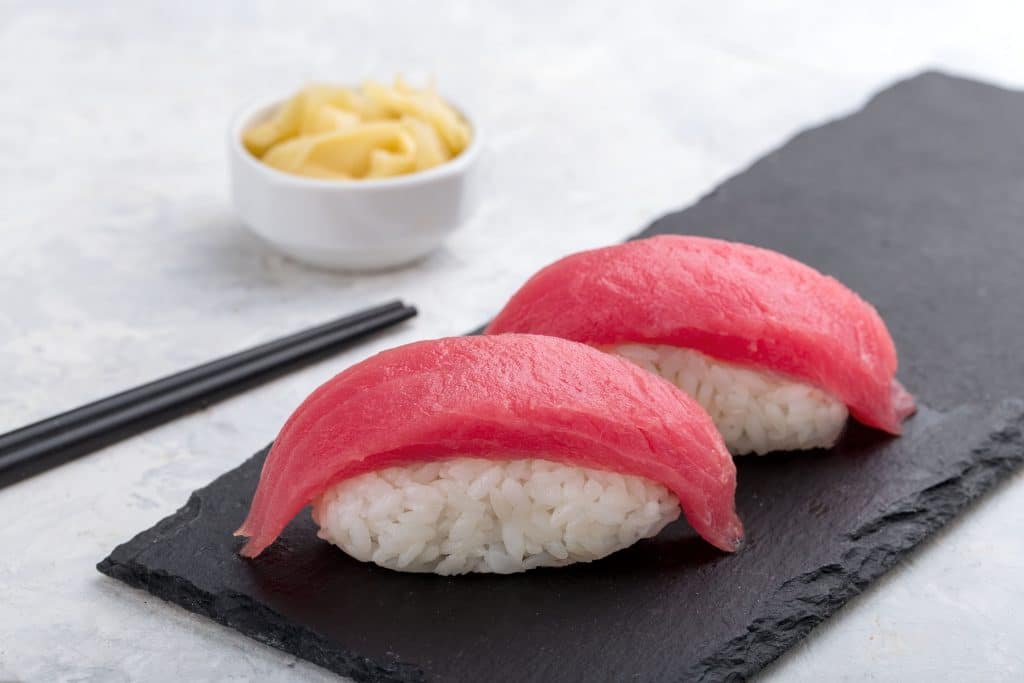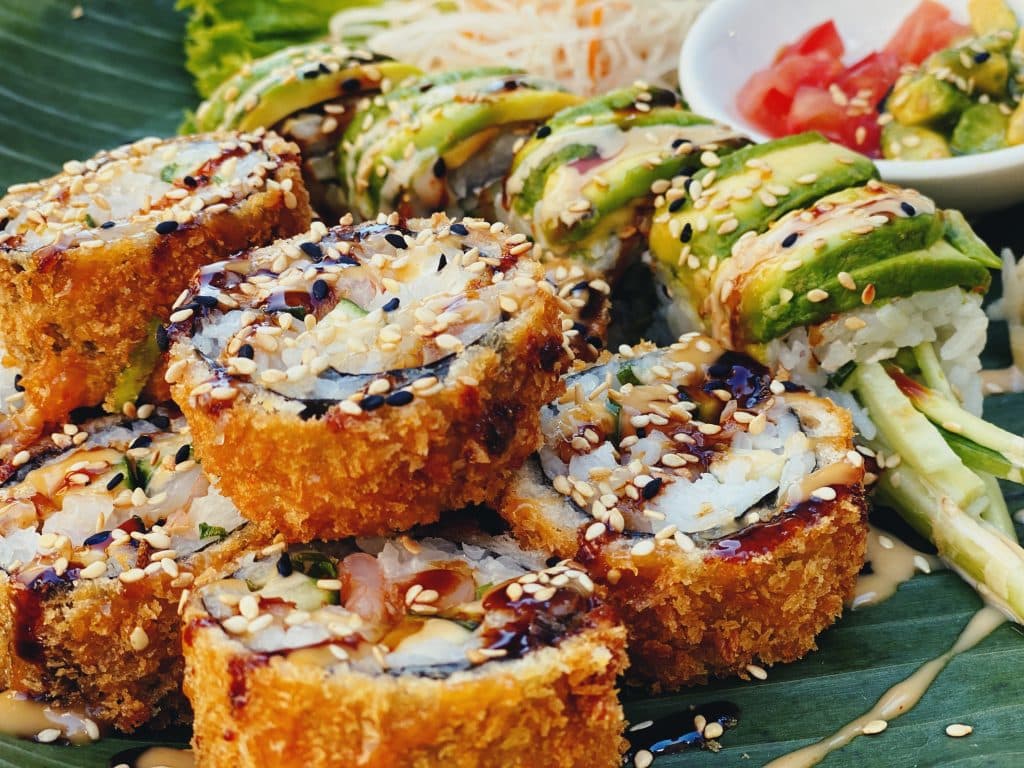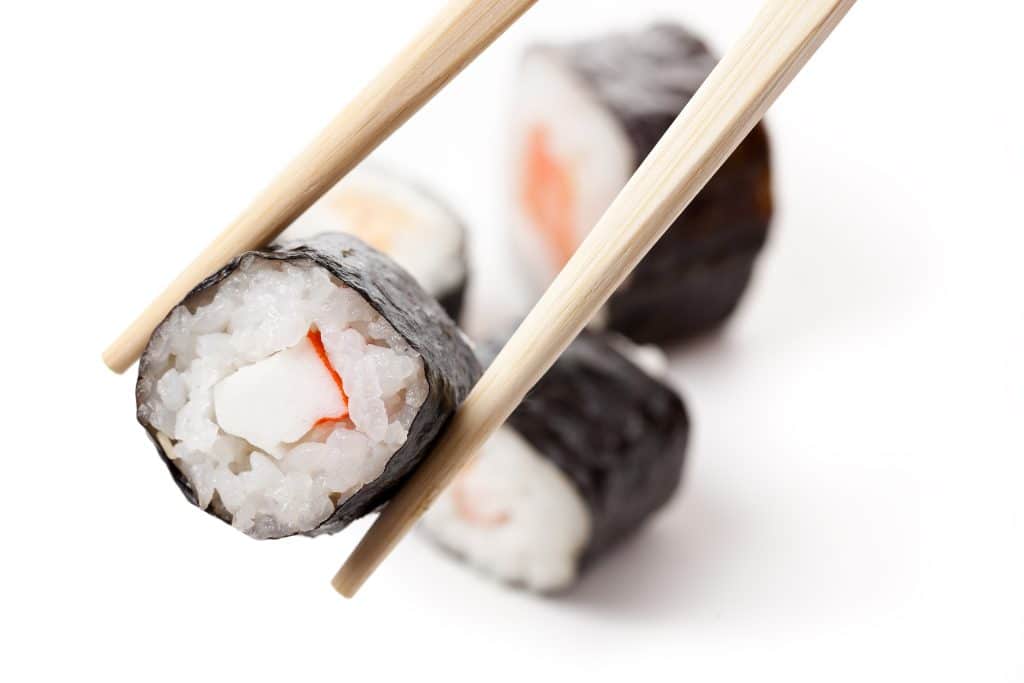Sushi is a culinary delight that has transcended its Japanese origins to become a global phenomenon. With its intricate flavors and artful presentation, sushi often finds itself on the list of healthier dining options. But how accurate is this perception? This post is here to dissect the nutritional profile of sushi, delve into its potential health benefits, and uncover any hidden risks. By the end, you’ll have a well-rounded understanding of whether sushi deserves its health halo or if caution should be exercised. So, let’s dive right in and explore the world of sushi from a health perspective.
Contents
The Basic Ingredients Of Sushi

When it comes to understanding the health implications of any dish, the first step is to break down its core components. Sushi primarily consists of vinegared rice, which serves as the base for most variations. While rice is a good source of energy, it’s also high in carbohydrates and has a moderate glycemic index, which can affect blood sugar levels. Then there’s the fish—often raw—which provides a rich source of protein and Omega-3 fatty acids. These are essential for heart health and cognitive function.
Seaweed, another key ingredient, wraps around the rice and fish to form what many recognize as sushi. This marine plant is a powerhouse of nutrients, including iodine, which is crucial for thyroid function. Additional components like avocado, cucumber, and other vegetables may also make an appearance, offering fiber and various vitamins. Condiments like wasabi, soy sauce, and pickled ginger add flavor but come with their own set of nutritional considerations, such as high sodium content.
Nutritional Breakdown

Now that you know what goes into sushi, let’s talk numbers. A typical sushi roll contains around 200 to 300 calories, but this can vary widely depending on the ingredients and size. The macronutrients are also a mixed bag. While fish provides high-quality protein and healthy fats, the rice contributes mainly carbohydrates. If you’re watching your carb intake, this is something to consider.
Micronutrients shouldn’t be overlooked, either. Sushi can be a good source of essential vitamins and minerals like Vitamin D, iodine, and selenium. However, it’s worth noting that these nutrients are often present in small amounts and can be easily overshadowed by less healthy components like sugar or sodium. For instance, a splash of soy sauce can add a significant amount of sodium, while the vinegared rice may contain added sugar.
Health Benefits Of Eating Sushi

Sushi isn’t just a feast for the eyes and palate; it also offers several health benefits. One of the most touted advantages is its Omega-3 fatty acid content, primarily from the fish. These fatty acids are known to improve heart health, reduce inflammation, and even boost brain function. Moreover, the protein in fish is easily digestible and contains all the essential amino acids, making it a complete protein source.
But the benefits don’t stop at the fish. The seaweed used in sushi is rich in antioxidants and essential minerals. Wasabi and ginger, commonly served with sushi, also have antioxidant properties and can aid in digestion. However, it’s essential to consume these in moderation, as excessive intake can lead to other health issues, which will be discussed in the subsequent sections.
The Hidden Risks

While sushi offers a myriad of health benefits, it’s crucial to be aware of the potential risks that come with it. One of the most significant concerns is the mercury content in fish. Predatory fish like tuna and swordfish tend to have higher levels of mercury, which can be harmful if consumed in large quantities over time. Mercury toxicity can lead to neurological issues and is particularly risky for pregnant women and young children.
Another hidden risk lies in the sodium content, primarily from soy sauce and other condiments. A single tablespoon of regular soy sauce can contain up to 900 milligrams of sodium, nearly 40% of the recommended daily intake. High sodium consumption is linked to increased blood pressure and a higher risk of heart disease. Additionally, the risk of foodborne illness from consuming raw fish cannot be ignored, along with the hidden sugars in sauces and vinegared rice.
Sushi Variants: Not All Are Created Equal

The term “sushi” encompasses a wide range of styles and ingredients, and not all are created equal when it comes to health. Sashimi, for example, consists of slices of raw fish without rice, making it a lower-calorie and lower-carb option. Nigiri features a slice of fish atop a small bed of rice, offering a balanced ratio of protein to carbs. These options are generally healthier and allow the natural flavors of the fish to shine.
On the other hand, Maki rolls, especially those found in Western sushi restaurants, often come loaded with extra ingredients like cream cheese, mayonnaise, and even deep-fried components. These not only hike up the calorie count but also add unhealthy fats and sugars to the mix. Specialty rolls, with their tempting sauces and toppings, can be the least healthy of all sushi options. Therefore, being selective about the type of sushi you choose can make a significant difference in its health impact.
Making Healthier Sushi Choices

If you’re a sushi aficionado looking to make healthier choices, there are several ways to go about it. Opting for brown rice instead of white rice is a good start. Brown rice is a whole grain that offers more fiber and nutrients compared to its white counterpart. It also has a lower glycemic index, making it a better option for blood sugar control. Another tip is to limit the use of soy sauce or choose a low-sodium version to keep your salt intake in check.
Choosing your fish wisely can also make a difference. Opt for fish that are lower in mercury, such as salmon, sardines, or trout. You can also skip rolls that include “special” ingredients like mayonnaise, cream cheese, or anything fried. Instead, focus on simpler rolls that highlight the natural flavors and nutrients of the fish and other ingredients. By making these mindful choices, you can enjoy your sushi experience without compromising your health.
The Verdict From Health Experts

So, what do health experts have to say about sushi? Nutritionists and dietitians generally agree that sushi can be a part of a balanced diet if consumed mindfully. The key lies in portion control and being aware of the ingredients in your chosen rolls. For instance, a serving of sushi should ideally be limited to six to eight pieces, and it’s advisable to avoid all-you-can-eat sushi restaurants where it’s easy to overindulge.
Experts also emphasize the importance of balance. While sushi can provide essential nutrients like Omega-3 fatty acids and protein, it should not be your sole source of these nutrients. Incorporating a variety of foods into your diet is crucial for overall health. Additionally, if you have specific dietary restrictions or health conditions, it’s always best to consult with a healthcare provider before making sushi a regular part of your diet.
So, Is Sushi Your Friend Or Foe?
Sushi can be both—a culinary friend that delights the senses and a nutritional ally when chosen wisely. Yet, it can also be a foe if consumed without awareness of its potential risks. The key to enjoying sushi as a healthy option lies in making informed choices and practicing moderation. So the next time you find yourself perusing a sushi menu, remember that knowledge is power, and the choice is yours to make!


